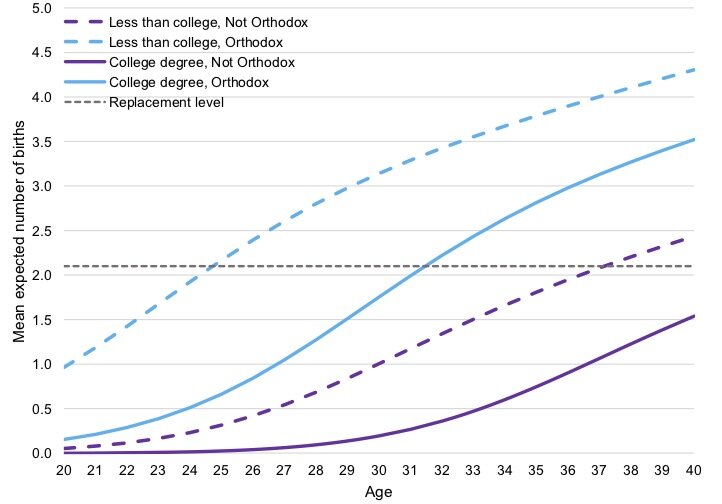In this midst of a complex discussion of the laws of ritual impurity as they apply to an adult woman, the Talmud notes that the same laws apply to a new born infant girl.
נדה לב, א
אשה אין לי אלא אשה תינוקת בת יום אחד לנדה מנין ת"ל ואשה
What is this interpretation of the difference between “a woman” and “and if a woman”? As it is taught in a baraita that from “a woman” I have derived only that the halakhot of menstruation apply to an adult woman. From where do I derive that the halakhot of a menstruating woman also apply to a one-day-old girl? The verse states: “And if a woman.” [when the verse includes young girls through the word “and” it includes even a one-day-old.]
From here.
This ruling is codified by Maimonides in his Mishneh Torah: “קְטַנָּה בַּת יוֹם אֶחָד מְטַמָּא בְּנִדָּה”. By this point you may be asking what case could the Talmud possibly be discussing? And the answer is: a real case.
Don’t Panic - it is not unusual
While it is unlikely that you have previously encountered the phenomenon of newborn menstruation, it is a very well described medical condition. In the English literature it is called “neonatal uterine bleeding” (NUB) or “neonatal menstrual-like bleeding” (NMB;) French authors refer to it as “la crise genitale du nouveau ne” and the Germans as “Neugeborenen genitalkrisen” which is useful to know, I suppose, should you find yourself in Europe with a baby girl who has this condition.
In a review paper titled “Is my baby normal? A review of seemingly worrisome but normal newborn signs, symptoms and behaviors” the authors, who were pediatric emergency physicians (meaning they looked after children - the doctors were themselves were, I think, adult-) noted that
Hormonal fluctuations in the neonatal period can result in changes in the genitourinary area that are concerning to parents. Female infants may experience scant vaginal bleeding due to hormonal withdrawal between the third and seventh day of life.
And here is how the very popular site WebMD explains what is going on:
At 2 or 3 days of age, your daughter may have a little bit of bleeding from her vagina. This is perfectly normal; it is caused by the withdrawal of the hormones she was exposed to in the womb. It will be her first and last menstrual period for another decade or so.
And that’s pretty much all there is to say. It is caused by a progesterone withdrawal in the little girl.
Incidentally there is another phenomenon that is somewhat related. Sometimes new-born baby girls will produce milk from their nipples (and sometimes it can happen in a baby boy). This is called “witchs’ milk,” although the correct medical term is galactorrhea. One study found it in 6% of 640 baby girls examined over a five-month period. It too is a normal finding, caused by the baby’s absorption of her mothers hormones, in this case prolactin, and it usually resolves with a month.
Neonatal uterine bleeding and other problems
So although it is a normal finding in a newborn girl, there is some evidence that neonatal menstruation may be an indicator of gynecological problems that will arise later in life. For example, it may be linked to early-onset endometriosis, a condition in which cells similar to the lining of the uterus grow outside of it, most commonly in the ovaries, but sometimes in the abdomen. And it has also been associated with fetal distress and low birth weight.
Summing this up in the European Journal of Obstetrics & Gynecology and Reproductive Biology, two researchers argued for more research in this phenomenon.
First, available evidence clearly indicates that neonatal bleeding is a menstruation characterized by progesterone withdrawal. Because feto-maternal factors influencing its frequency (fetal growth restriction, preeclampsia) are characterized by a reduced blood supply to the placenta, it seems that…NMB can therefore be used as a marker of intrauterine distress and, as a sign of fetal distress the bleeding requires to be registered in medical notes of all newborns.
Secondly, NMB may represent a sign of increased risk of developing endometriosis during adolescence and, in turn that this form may be more frequently progressive, as shown by several studies. Registration of NMB will allow prospective studies aimed at validating the application to newborns of the menstrual regurgitation theory.
Thirdly, there is a need to revive scientific interest in the neonatal menstrual-like bleeding; an event that possibly plays a role, among others, in the transgenerational evolution of major reproductive disorders and adolescent endometriosis.
Although neonatal uterine bleeding is not common, it certainly occurs, which is why the Talmud explored its ritual ramifications. We should expect nothing less.
“Today, the bleeding is completely neglected and considered an uneventful episode of no clinical significance”











